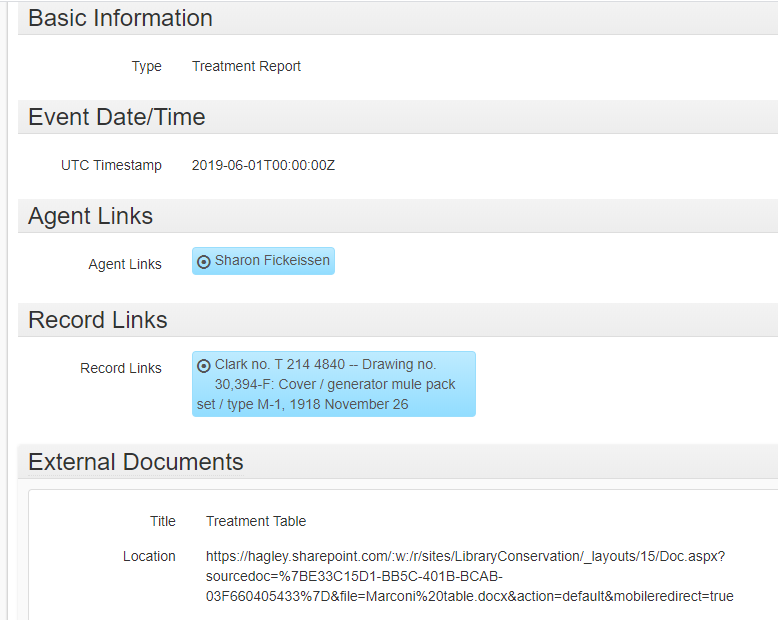Q: Are you able to work from home?
A: Yes!
Q: Really?? Did you bring items home?
A: Yes, I’ve been quite busy actually, and no, I didn’t bring any collection items home.
Q: Isn’t your job cleaning, stabilizing and preserving collections relatively hands-on?
A: It is, but there is a tremendous amount of record keeping that goes along with preserving our collections and that information needs to be preserved, too.
Q: Haven’t you already written all your treatment documentation down?
A: I keep a written log of all preservation activities, I also prepare reports that accompany items when they return to their collecting department. But to fully integrate the documentation with bibliographic and collection records, I enter treatment information into our collections databases. This ensures the information is permanently attached to the item it pertains to and makes it readily available to all library staff.
Q: Why weren’t you just doing that at work?
A: Because I’d much rather be working on treatments at my bench than sitting in front of the computer doing administrative stuff. Sometimes procrastinating comes in handy!
Q: Are you sure you want to admit that? Maybe we should move on….What are these collection databases you speak of?
A: Collections databases contain information about cataloged items. At Hagley, Published Collections use EOS as their database; Manuscripts & Archives and Audiovisual and Digital Collections use ArchivesSpace. Both are web-based and allow for preservation activities to be searched by action/event, agent, and date.
Q: I am so nerding out on this, please tell me more!
A: Wow. Well, for Published Collections I enter treatment data into the 583 field of the item’s MARC record, the machine-readable bibliographic record that describes library resources. The 583 field is used to record information about preservation and digitization actions. Since MARC is standardized, a controlled format and vocabulary are used. At Hagley, we use the following fields:
- · |3 Materials specified- Parts or copies of an item. Example: Vol. 2, no.3.
- · |a Action - Standardized terminology descriptive of the action Example: condition reviewed, transformed digitally). The actions I most frequently record are “conserved” and “housed”.
- · |c Time/date of action - Date action was initiated in YYYYMM format
- · |i -Method of action - Means or technique by which an action is performed. Aka, what was done to the item. Example: cover removed; disbound, staples removed.
- · |k - Action agent - Person or organization performing the action Example: vendor or service provider
A typical entry looks like this:

Unlike Published collections, which mainly consist of 1 item, Manuscripts, Archives, and Audiovisual collections will often consist of many linear feet of items, so the reporting can be a bit different. We may still only mend one item, or residues may need to be removed from all the items. The collections database allows us to attach our documentation to the collection as a whole (collection level) to specific parts of the collection (box/folder level) or to a specific item (item level). In ArchivesSpace, we use the Events module to record preservation activities. Conservation uses the following fields in Events:
- · Type of Event – Collection Survey, Condition Report, Treatment Report, Photo Documentation
- · Outcome – Pending/Completed/In Process
- · Outcome Note – if a formal report was not generated, this field contains action summary.
- · Event Date/Time – we use UTC Time stamp, generally YYYY-MM-DD
- · Agent Links – the name of the person that performed the action.
- · External Documents – field where we can link digital documentation (reports, tables, photos).
The records look like this:

Q: So, why all the redundancy? Sounds like you’re generating triplicate documentation.
A: We have an obligation to produce and maintain accurate, complete, and permanent records of our preservation activities, and our documentation needs to be produced and maintained in as permanent a manner as practical. Written documentation is kept in the lab, printed copies of reports accompany the item, and digital (or digitized) documents are embedded in bibliographic and collections records. This practice keeps the information accessible yet preserved and fulfills our professional obligation.
Q: Well, get back to it so we can go out biking later!
A: Thanks for sitting down to chat. BIKES!!
Sharon Fickeissen is the Hagley Library Senior Conservation Technician.
